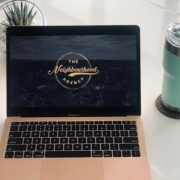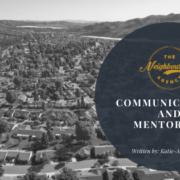So you’re working from home…here are a few things that helped me get in my groove
With the state of our world, many of us have been thrust into a life of working from home as the new normal. No time to prepare, no time to process, but a need to accept it. We’ve either been in your shoes or we’re going through it with you; and I’m here to say it does get easier with time and a dash of patience.
Working from home looks different for everyone and is a different perspective to the traditional ‘9 to 5.’ Removing the confinements of an office offers a sense of freedom, flexibility and ownership, as you are solely responsible for the execution and completion of your work. You pick your location, times of productivity and when you think it’s the best time to take lunch. Sounds like a dream, right? Well, it can be, but it’s also not without its own challenges. Working remotely requires a cocktail of skills, systems and processes (and sometimes a cocktail!). I quickly realized that the systems I had built, no longer suited the workspace I was in. I first had to accept that the approach to remote work looks different, although the outcome may be the same. Two of the biggest challenges I encountered lied in the workspace itself and the systems best suited to getting the job done.
The Workspace
Possibly the most important part about working remotely. Separating work from your home is important. I found that this was not just about having a physical place to work, but creating a routine for the work week and proceeding with the more comfy relaxed routine on weekends. I found that I began to miss my 45-minute commute, which allowed me to have “me time” before starting my day. It’s not often that we roll out of bed and start working. We’re allotted time between waking up and starting our workday on-site, so something as minor as removing the commuting time began to impact productivity and performance. For me, it was important to train myself into understanding what routines are designed to get me working and which ones were designed to encourage relaxation. For example, if your previous routine involved a 30-minute commute with music, a book, podcast or just quiet time, try to carve out that same amount of time during similar hours while working from home.
Another vital piece to the puzzle, is to implement work hours. Having definitive work hours ensures clients, team members and you are clear that you do have a point in the day when you are considered ‘out of office’ for the evening.
Build a system the works for you
As a communicator, working from home has meant implementing programs and systems to encourage access, productivity and peak performance. Slack, Zoom, Google Drive and Asana have become a holy grail. They’ve provided me with an organizational system for managing projects and communicating with my team, in a way that doesn’t feel remote. Keeping a daily planner, scheduling team updates or end of week check-ins mean you won’t miss a beat, the communication is always open with your team and a system of accountability has been set in place. These systems ensure the job gets done no matter the location. Working from home does not have to impact productivity. This part takes time and patience, but they are essential to the process of exploring and understanding what systems are ideal.
Enjoy it and celebrate the small wins
Working from home is a great opportunity, but it does not come without its own share of obstacles. These are the things that have worked for me, but we’re all a bit different and it’s important for each individual to do what works best for them personally. It’s up to you to figure out how to best manage your time, resources and productivity on your own, but don’t hesitate to reach out to others to see how they’re making it work in case they have some great tips! For many of us, this is a whole new experience, and it can be a lot to take in. But it’s also a great time to explore your working habits and get into a groove that works for you. Be kind to yourself throughout the process and celebrate the small successes to keep yourself motivated and accountable.
During this time it’s important to be patient and create systems around the reality we’re living in today and we will get through this together, as a Neighbourhood!



